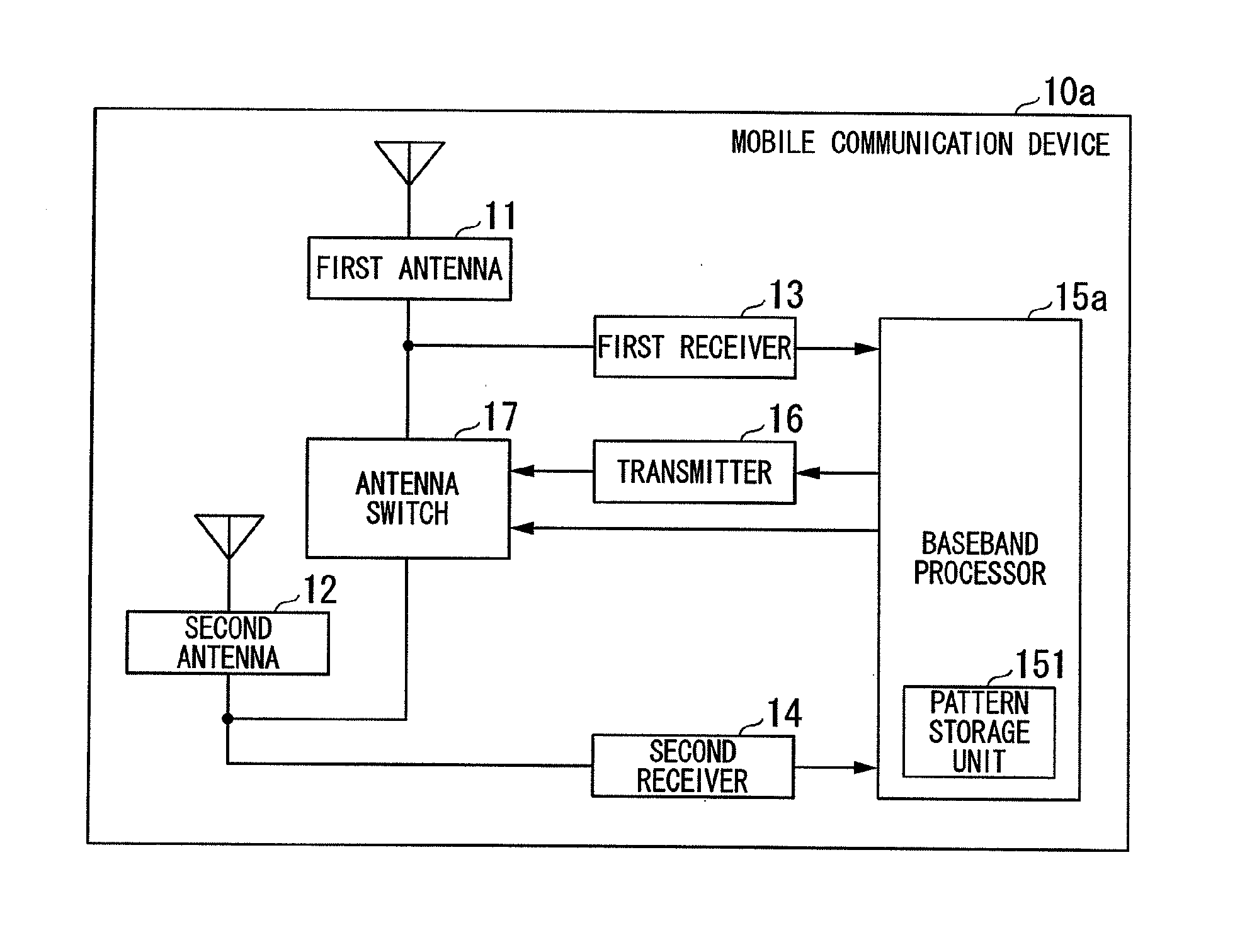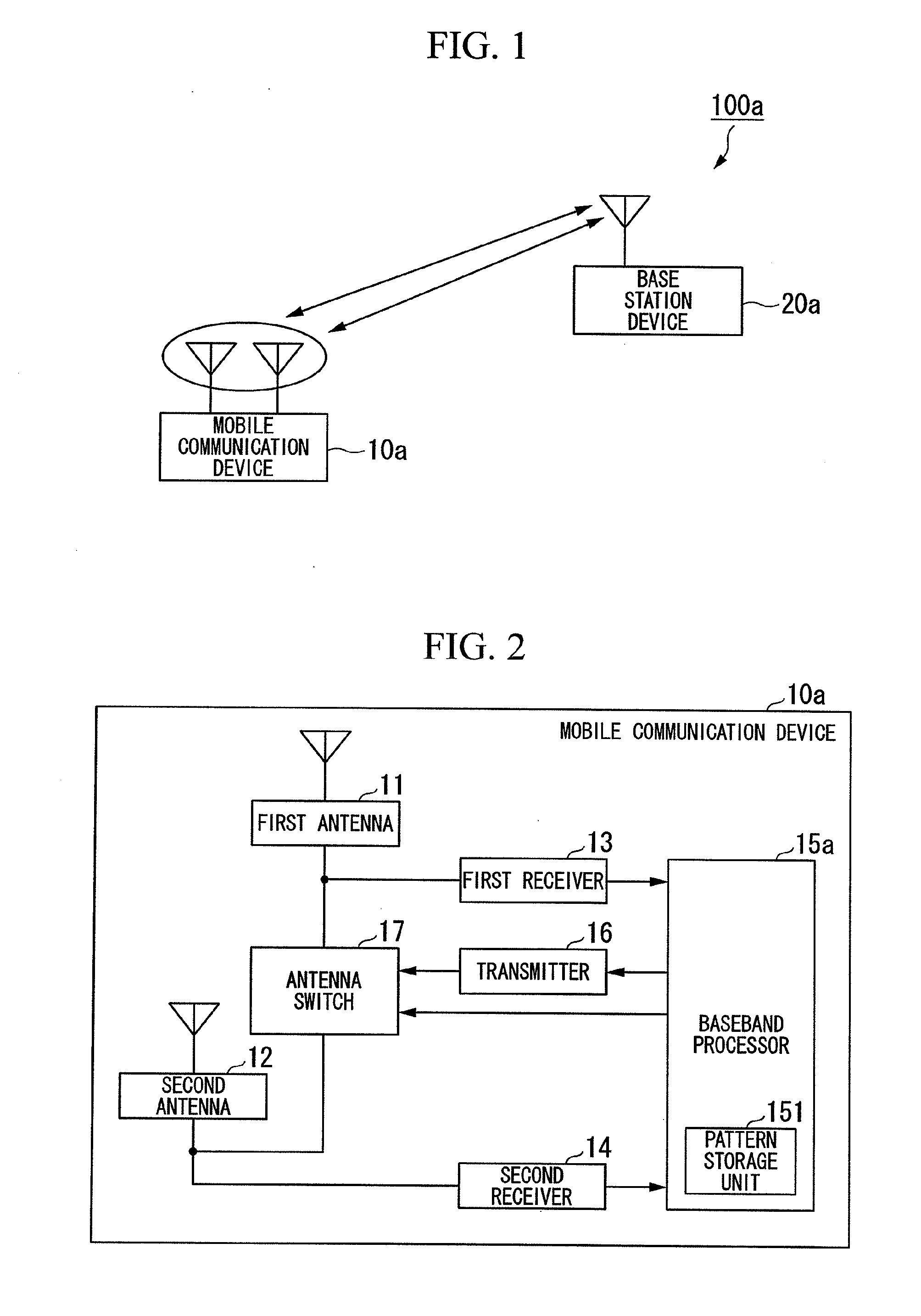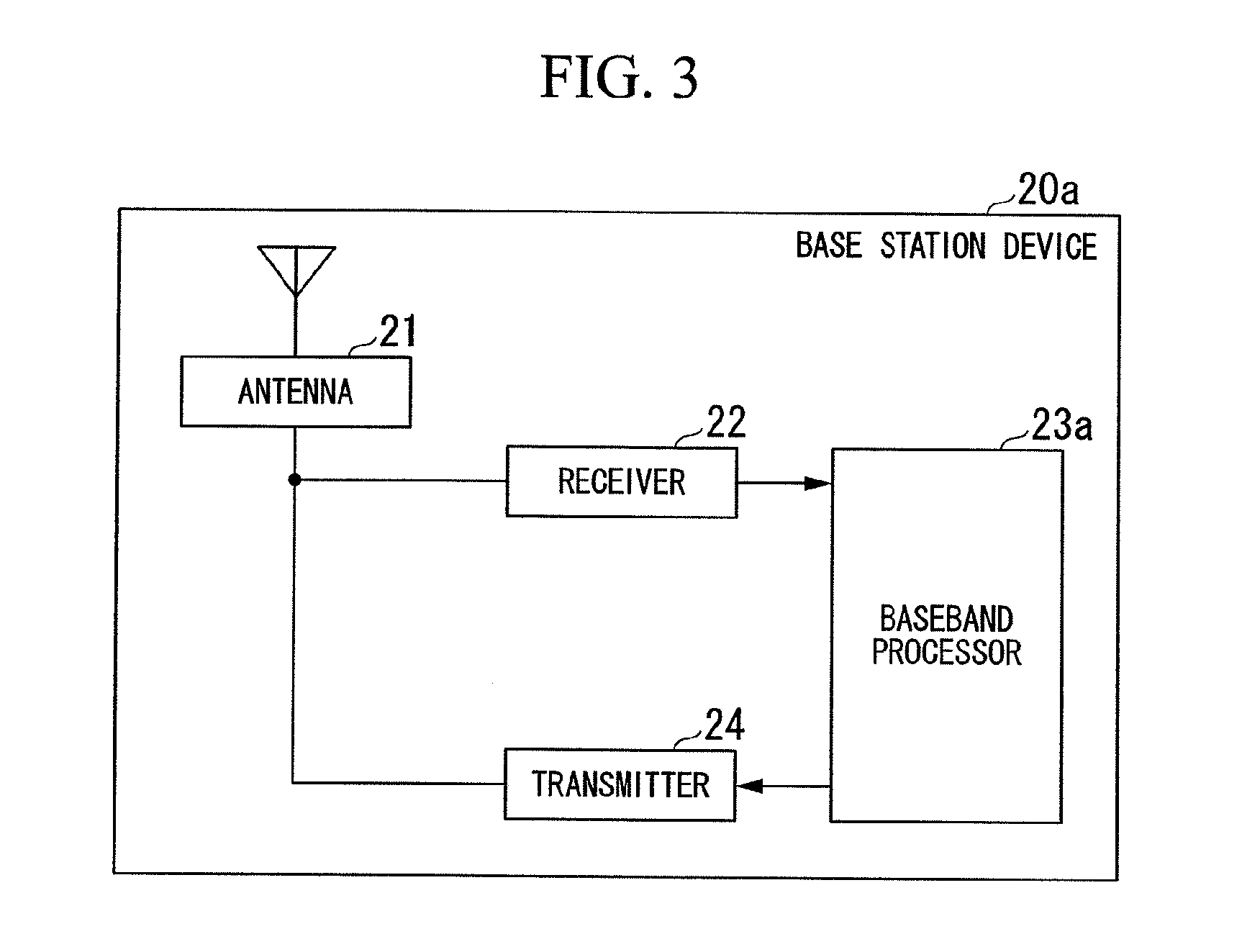Mobile communication device, base station device, radio control method, and mobile communication system
a mobile communication and base station technology, applied in the direction of digital transmission, wireless communication, transmission path sub-channel allocation, etc., can solve the problems of rayleigh fading, difficult demodulation process, and greatly deteriorated received signal in the mobile communication device, so as to suppress the deterioration of communication quality and the likelihood of the transmission antenna being switched
- Summary
- Abstract
- Description
- Claims
- Application Information
AI Technical Summary
Benefits of technology
Problems solved by technology
Method used
Image
Examples
first embodiment
[0060]FIG. 1 shows a network architecture of a mobile communication system 100a (a first embodiment). The mobile communication system 100a includes a mobile communication device 10a including a plurality of antennas, and a base station device 20a. The mobile communication device 10a performs radio communication with the base station device 20a. The mobile communication device 10a performs radio communication with another mobile communication device via the base station device 20a.
[0061]The mobile communication device 10a includes the plurality of antennas. The mobile communication device 10a transmits reference signals to the base station device 20a using a transmission antenna and a standby antenna. In particular, the reference signal transmitted using the standby antenna is transmitted so that the base station device 20a can determine which antenna is suitable for radio communication with the mobile communication device 10a. The mobile communication device 10a determines a timing...
second embodiment
[0102]In the first embodiment described above, a plurality of patterns are prepared in advance for the reference signal transmissions using the standby antenna, and any one of the plurality of patterns is selected to determine the reference signal transmission timing. On the other hand, in a second embodiment, a determination is made as to whether the reference signal is transmitted from the standby antenna, at predetermined intervals, and a reference signal transmission timing is determined based on the determination. A mobile communication system 100b according to the second embodiment will be described. Since the mobile communication system 100b has the same network architecture as the mobile communication system 100a shown in FIG. 1, a description of the mobile communication system 100b will be omitted.
[0103]The mobile communication system 100b (the second embodiment) includes a mobile communication device 10b and a base station device 20b. The mobile communication device 10b di...
third embodiment
[0121]In the first embodiment described above, the process of transmitting and receiving a signal specific to the control of the timing when the reference signal is transmitted using the standby antenna (e.g., the pattern request signal or the pattern selection signal) is performed each time the first pattern or the second pattern is selected. On the other hand, in a mobile communication system 100c (a third embodiment), a pattern switching trigger is used so that a pattern is switched without causing the transmission and reception of the signal specific to the control of the timing when the reference signal is transmitted using the standby antenna. The mobile communication system 100c according to the third embodiment will be described. Since the mobile communication system 100c has the same network architecture as the mobile communication system 100c shown in FIG. 1, a description of the network architecture of the mobile communication system 100c will be omitted.
[0122]The mobile ...
PUM
 Login to View More
Login to View More Abstract
Description
Claims
Application Information
 Login to View More
Login to View More - R&D
- Intellectual Property
- Life Sciences
- Materials
- Tech Scout
- Unparalleled Data Quality
- Higher Quality Content
- 60% Fewer Hallucinations
Browse by: Latest US Patents, China's latest patents, Technical Efficacy Thesaurus, Application Domain, Technology Topic, Popular Technical Reports.
© 2025 PatSnap. All rights reserved.Legal|Privacy policy|Modern Slavery Act Transparency Statement|Sitemap|About US| Contact US: help@patsnap.com



